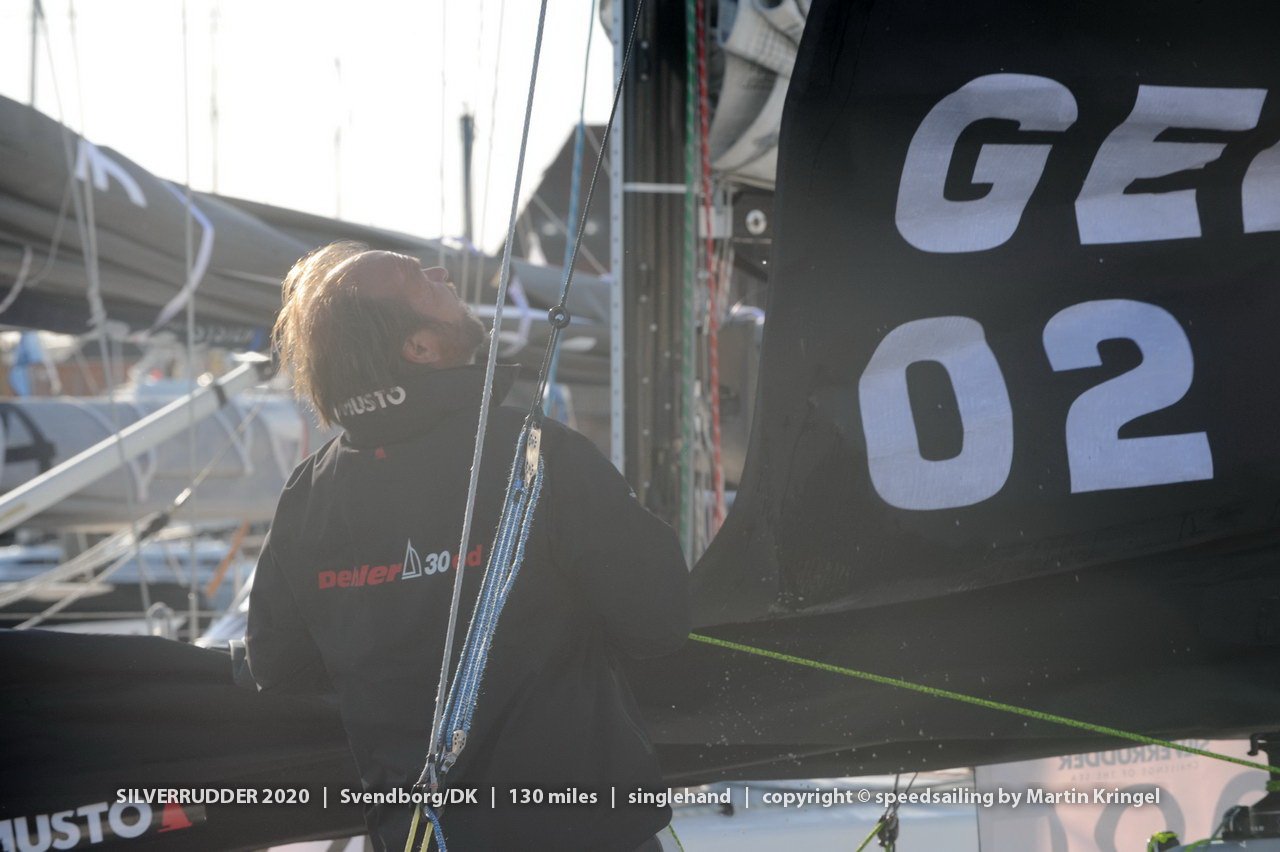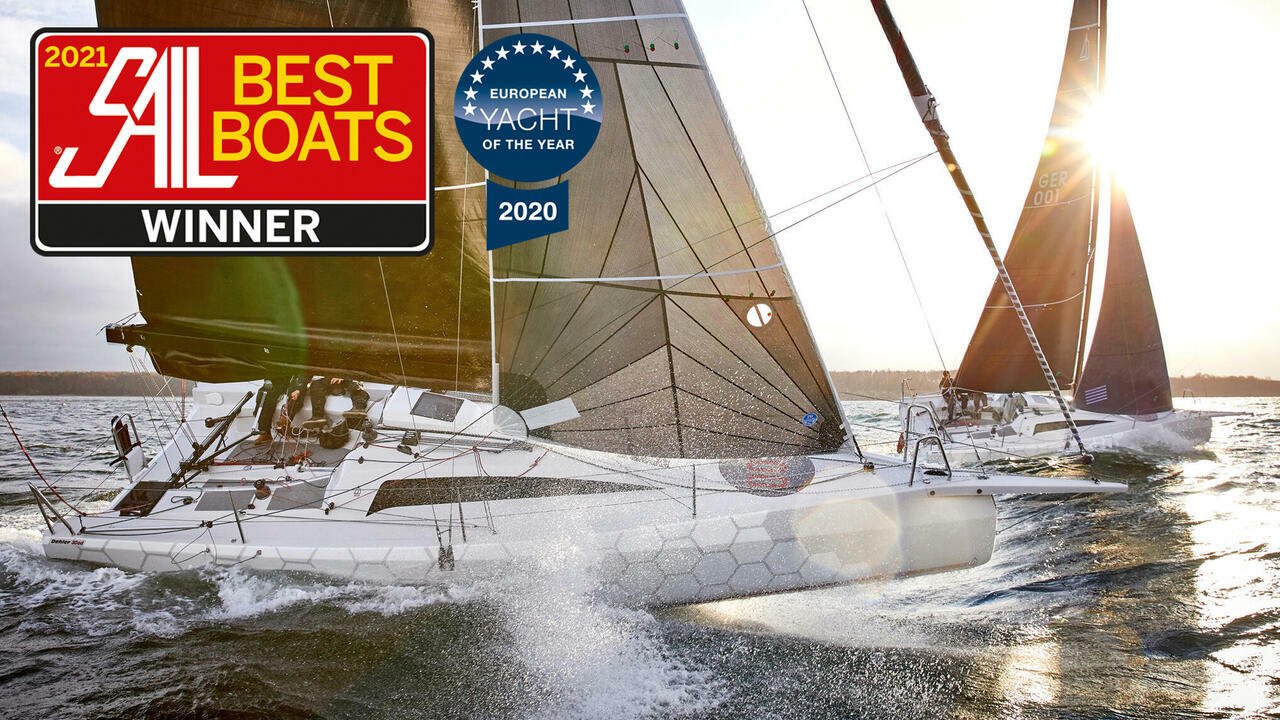Since Corson and Hansen are often sailing doublehanded, the favored design would need a deck layout and other features to support making this an easy mode of sailing with minimal compromise in performance. With this being a strong criteria, Corson’s choices whittled down quickly to the SunFast 3300, Figaro 3 and Dehler 30. After test drives on the two French-built designs, he’s opted for the German-built Dehler 30.”The biggest factor in our decision was the emphasis in the design brief about this boat being good upwind, good all-around in light to moderate air, and capable of planing offwind in a breeze,” he says. “This was a big deal for us in this area because without speed in those conditions you’re not going anywhere around here. Also, since we rarely have long legs of heavy-air reaching, the form stability in the wider boats translates to drag in our lighter conditions here, and the Dehler seems to have a more balanced hull form to get the stability when needed without excessive form drag when it’s not.”
There were other features standard to the Dehler 30 that attracted Corson: lightweight and energy-efficient lithium phosphate batteries, less than half the weight of conventional AGM battery power units, and the small but efficient 2-cylinder Nanni inboard diesel engine. One might wonder how an engine that weighs only 87 kg (191 lbs.) and delivers 10 hp can be an effective powerplant for a boat this size. This is due to the efficiency of yet another really cool feature normally found only on high-tech custom raceboats: the retractable propeller and shaft assembly called the “stealth drive.” This clever system deploys the shaft and efficient three-blade propeller downward away from the hull when needed, and lifts it back up into its position flush with the hull, allowing for both fast powering and drag-free sailing.
“I’ve always worried about drag, and had small folding props on raceboats,” Corson says. “Having a cruising prop available when you need it is outstanding, especially when it can disappear when you don’t need it.”Anticipating only two crew on board for double-handed sailing means stability upwind and reaching has to come from a source other than hiked crew. Some of this is produced by the hard chines in the hull shape that carry the hull volume further outboard to achieve form stability when the boat starts to heel, yet when upright is not dragging too much through the water in light air. This design strategy seems to work, since the measured stability index is about 117, just exceeding the minimum 115 needed for being compliant with the offshore category of safety regulations.
However, this boat powers up quite quickly with its generous sail plan, so achieving stability without more crew weight is important. The Dehler 30 uses water ballast tanks, which are certainly not new technology, but it can be a challenge to find the correct tradeoff of the amount of weight needed to achieve stability and where to place the tanks where they will optimize the sailing trim without adding weight. To do this, Judel/Vrolijk placed the tank at about the companionway position and outboard at about the chine, with 200 liters (53 gal) determined to be the optimum amount: not so much to add excess weight and take too long to move side-to-side, but just enough to offset the righting moment produced by about three hiked crew.
Another interesting feature is when the boat does heel, the small twin angled rudders come into their own: the leeward rudder is at the perfect angle and correct size to keep the boat tracking with little helm and no cavitation. Corson claims he’s yet been unable to broach the boat because the rudder remains fully immersed all the time. And the added drag of the windward rudder is minimized by its low-aspect design geometry. He also finds the tiller helm in good balance, with a level of responsiveness akin to single-rudder designs.
Besides what Corson terms the “Euro-styling” of the boat having its reverse full bow, long chines, fixed bowsprit, dual rudders, low-profile angled cabin house, full stern and dual rudders, what also stands out is its huge sail plan and its proportions. A large square top main of 33.5m2 and 98.3m2 asymmetric spinnaker flown from the end of the carbon bowsprit that is fixed 1 meter out from the stem means there’s plenty of horsepower to really get going offwind.
Yet the carbon mast being 4.3m aft of the stem (a full 1.0m further aft than a Farr 30) and having a single set of long swept-back spreaders allows for huge non-overlapping headsails of 28.2m2 in area, 25 percent larger than those on a Farr 30 and 15 percent larger than on a Melges 32. So, there’s plenty of upwind horsepower too.
TEST REPORT MIXED OFFSHORE, DOUBLE-HANDED & SINGLE-HANDED










